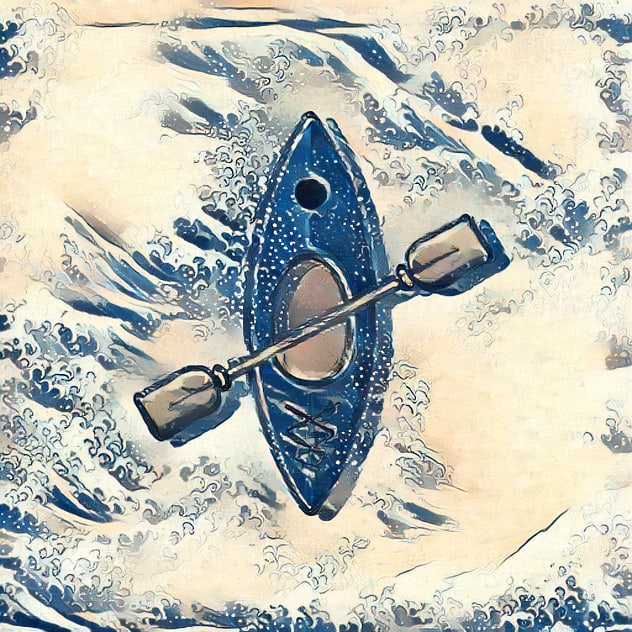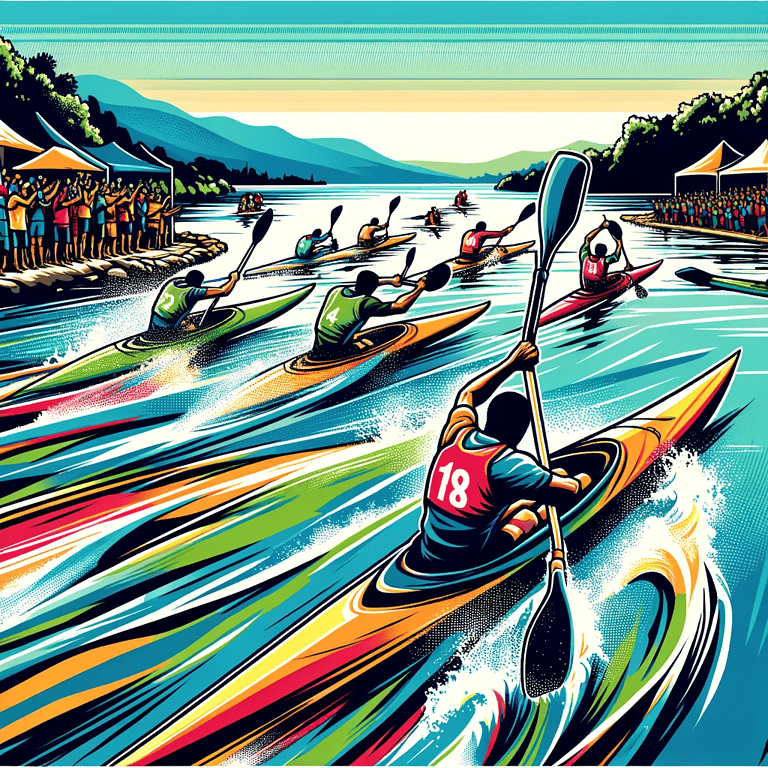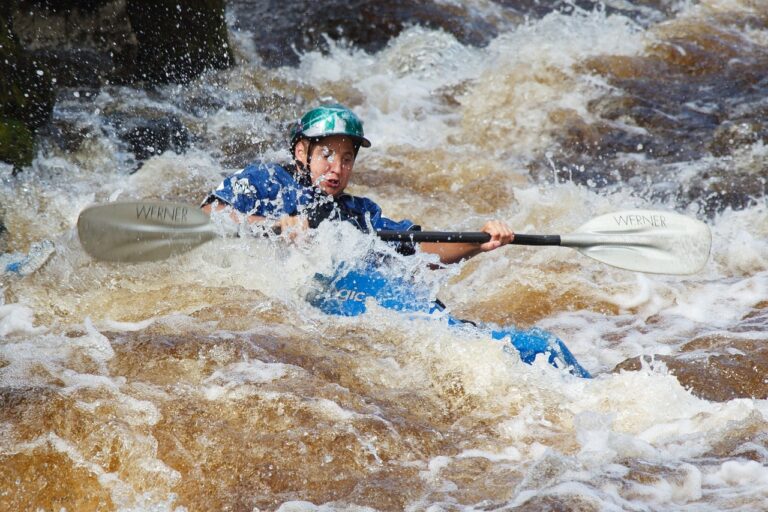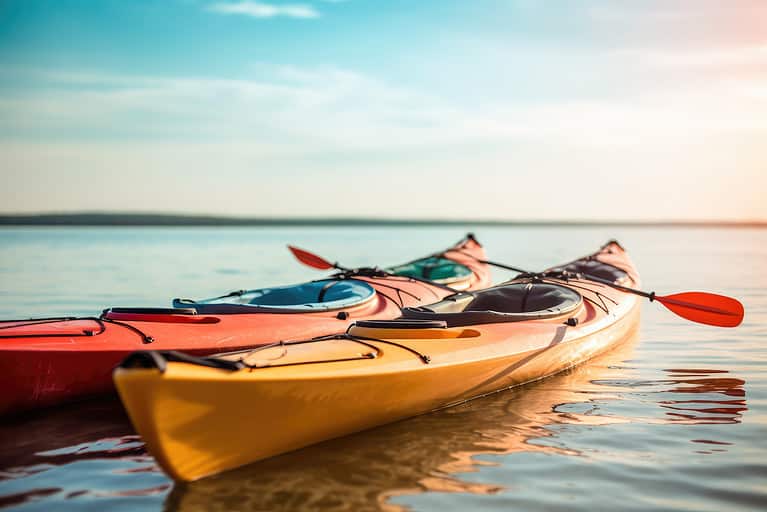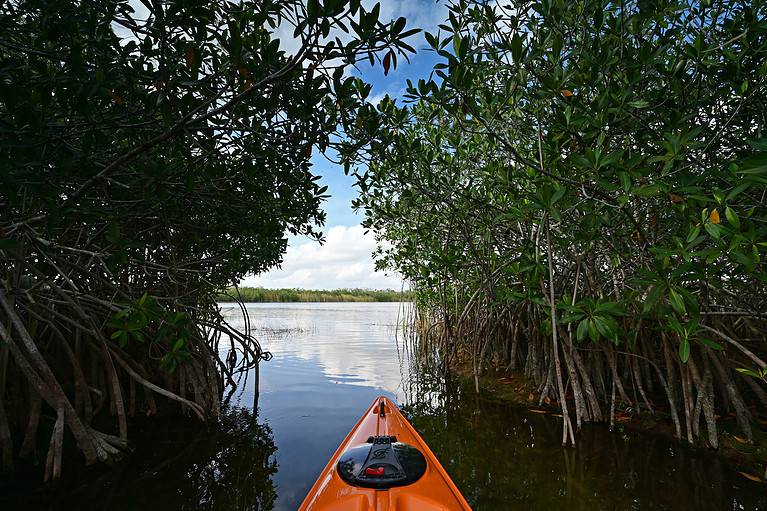What Size Paddle Do I Need For Kayaking
Are you tired of struggling with a paddle that’s too long or too short for your kayaking adventures? Look no further! This article will dive deep into paddle sizing to help you find the perfect fit. We’ll explore everything from understanding the basics of paddle sizing to considering your kayak type and size paddle. With our knowledgeable and informative tips, you’ll soon be gliding effortlessly through the water with a paddle that feels like an extension of your arm. Get ready to revolutionize your kayaking experience!
Key Takeaways
- Grip: Hands should be shoulder-width apart with aligned knuckles
- Kayak type and size influence paddle length
- A feathered grip reduces wind resistance.
- Trying out different paddle sizes and styles enhances the kayaking experience.
Understanding the Basics of Paddle Sizing
To ensure a comfortable and efficient kayaking experience, it’s important to understand the basics of paddle sizing. Understanding proper paddle grip is essential for maximizing control and minimizing paddling fatigue. When gripping the paddle, your hands should be shoulder-width apart, with your knuckles aligned straight. This grip allows for optimal power transfer from your body to the water, ensuring each stroke propels you forward effectively.
In addition to grip, the weight and balance of the paddle are crucial factors to consider. Paddle weight can greatly affect your stamina during long kayak trips. A lightweight paddle will reduce strain on your arms and shoulders, allowing you to paddle for extended periods without feeling fatigued. Balanced paddles distribute their weight evenly throughout, providing stability and maneuverability in the water.
Now that we’ve understood the importance of proper grip and paddle weight balance, let’s move on to considering your kayak type and size. By considering these factors along with personal preferences such as paddling style and skill level, you can determine the right size of paddle for you. Different kayaks require different lengths of paddles due to variations in width and seating positions.
Considering all these aspects will help you select a well-fitted paddle that enhances your kayaking experience by providing comfort, efficiency, and control on the water. So let’s dive into how kayak type and size influences our choice of paddle!
Consider Your Kayak Type and Size Paddle
When choosing a paddle for kayaking, it’s important to consider your kayak’s type and dimensions. The size of your paddle can greatly impact your performance on the water, so choosing one suitable for your specific kayak is crucial.
Paddle Size Considerations for Whitewater Kayaking:
A shorter paddle is generally preferred for whitewater kayaking, where maneuverability and quick strokes are essential. A shorter paddle allows for quicker reactions and easier maneuvering through turbulent waters. Additionally, whitewater paddles often have larger blades to provide more power with each stroke.
Paddle Size for Inflatable Kayaks and Packrafts:
Inflatable kayaks and pack rafts are typically smaller than traditional hard-shell kayaks. Therefore, a shorter paddle is usually recommended for these types of vessels. A shorter paddle will prevent you from hitting the sides of the kayak or pack raft while paddling and allow for more efficient strokes in tighter spaces.
To help you visualize the different paddle sizes based on kayak types, here is a handy table:
| Kayak Type | Recommended Paddle Length |
|---|---|
| Whitewater Kayak | Shorter |
| Inflatable Kayak/Packraft | Shorter |
| Traditional Kayak | Longer |
By considering the type and dimensions of your kayak, you can select an appropriate paddle size that will enhance your kayaking experience. Once you have determined the right size, you can determine the ideal length of your paddle without missing a beat.
Determining Your Paddle Length
Determining your paddle length is crucial for optimizing your performance on the water. It’s important to consider your height, kayak width, and paddling style when determining the right paddle length for you. Here are some key points to keep in mind:
- Proper technique for paddling a kayak: Before choosing a paddle length, learning and practicing proper paddling techniques is essential. This will not only improve your efficiency but also prevent strain or injury. Taking a lesson or watching instructional videos can help you master the correct form.
- Benefits of using a lightweight paddle for kayaking: Using a lightweight paddle offers several advantages. Firstly, it reduces fatigue during long trips, allowing you to paddle farther without getting tired quickly. Secondly, it enhances maneuverability, making navigating tight spaces easier or performing quick turns. Lastly, a lighter paddle is gentler on your joints and muscles, reducing the risk of overuse injuries.
- Consider your kayak type and size: The size and width of your kayak play a role in determining the appropriate paddle length. A wider kayak requires a longer paddle to reach the water comfortably without straining your arms or back. On the other hand, narrower kayaks require shorter paddles for better control and maneuverability.
- Personal preference: Ultimately, choosing the right paddle length also comes down to personal preference. Some individuals prefer slightly longer paddles for more power and speed, while others opt for shorter ones for increased agility.
| Low Angle | Kayak Width | |||
| Paddler Height | Under 23″ | 23″ – 28″ | 28″ – 32″ | 32″ over |
| Under 5′ | 210 cm | 220 cm | 230 cm | 230 cm |
| 5′ to 5’6″ | 215 cm | 220 cm | 230 cm | 240 cm |
| 5’6″ to 6′ | 220 cm | 220 cm | 230 cm | 240 cm |
| Over 6′ | 220 cm | 230 cm | 240 cm | 250 cm |
Transitioning into the next section about choosing the right paddle material: Now that we’ve discussed how to determine your ideal paddle length, let’s move on to another important aspect – choosing the right material for your kayak paddle.
Choosing the Right Paddle Material
Once you have determined your ideal paddle length, it is important to consider the right material for your kayak paddle. Various materials are available, but one that stands out is carbon fiber. Carbon fiber paddles offer several advantages, making them popular among kayakers.
Firstly, carbon fiber paddles are incredibly lightweight. This makes them easier to handle and reduces fatigue during long kayaking trips. The lightweight nature of carbon fiber also allows for faster strokes and improved efficiency in the water.
Secondly, carbon fiber paddles are known for their exceptional strength and durability. They can withstand the rigors of rough waters and rocky shores without easily breaking or cracking. Carbon fiber holds up better over time than other materials like aluminum or fiberglass.
When comparing the durability of different paddle materials, it’s important to note that while aluminum paddles may be more resistant to impact, they tend to weigh more which can be tiring during prolonged use. Fiberglass paddles strike a balance between weight and durability but may not match up to the strength of carbon fiber.
In conclusion, choosing a paddle made from carbon fiber offers numerous advantages such as lightness and durability. However, it’s always best to try out different paddle sizes and styles before deciding what works best for you. It’s crucial to find a paddle that feels comfortable in your hands and suits your kayaking style for an enjoyable experience on the water.
Trying Out Different Paddle Sizes and Styles
Try out various paddle styles and sizes to find the perfect fit for you. It’s important to remember that the right paddle size and style can greatly enhance your kayaking experience. Here are some key factors to consider when experimenting with different options:
- Paddle grip techniques:
- Feathered grip: This technique involves slightly rotating one blade perpendicular to the other, reducing wind resistance during strokes.
- Unfeathered grip: In this technique, both blades are aligned in the same plane, providing equal power on each stroke.
- Paddle blade shapes and their impact on performance:
- Low-angle blades: These blades have a longer and narrower shape, ideal for low-angle paddling styles where the shaft is parallel to the water surface.
- High-angle blades: With a shorter and wider design, these blades suit high-angle paddling styles where the shaft is more vertical.
- Paddle length:
- Longer paddles provide increased leverage for powerful strokes but require more maneuvering effort.
- Shorter paddles offer quicker maneuverability but may sacrifice some power.
Experimenting with different paddle sizes and styles will help you identify what feels most comfortable and efficient for your kayaking adventures. When deciding, consider factors like your height, arm length, kayak width, and personal preferences.
By trying out various paddle grips techniques and considering how different blade shapes affect performance, you’ll be well-equipped to choose a paddle that suits your needs perfectly. Happy kayaking!
Frequently Asked Questions
What are some common mistakes people make when choosing a paddle size for kayaking?
When choosing a paddle size for kayaking, people often make some common mistakes. One of the primary considerations is selecting the wrong length. Many beginners choose a too-short or too-long paddle, which can affect their paddling efficiency and comfort. Another mistake is neglecting the blade size, which can impact the power generated with each stroke. It’s important to consider these factors to ensure an enjoyable kayaking experience.
Are there any specific considerations to keep in mind for kayak fishing when choosing a paddle size?
When it comes to kayak fishing, paddle length plays a crucial role in your success. Did you know that using the wrong paddle size can decrease your efficiency by up to 30%? That’s why understanding kayak fishing paddle techniques is essential. Longer paddles provide more power and speed, ideal for covering larger distances. On the other hand, shorter paddles offer better maneuverability in tight spaces or when fighting fish. So choose wisely, and let your paddle enhance your kayak fishing experience!
Can I use the same paddle for different kayaks, or do I need different paddles for each?
When considering your kayak type, it is important to note that different kayaks may require different paddles. For example, inflatable kayaks typically require a specific paddle size to accommodate their unique design. Additionally, the weight of your paddle is crucial for various kayaking activities. Lighter paddles are ideal for longer trips or racing, while heavier ones provide more power and control in rough waters or whitewater conditions. So, choosing a paddle size and weight that suits your specific kayaking needs is essential.
Are any paddling techniques or strokes requiring a specific paddle size or style?
Regarding paddling techniques and strokes, paddle size and style are crucial. The importance of paddle size cannot be overstated. A larger blade can provide more power for strong strokes, while a smaller blade allows for faster cadence and maneuverability. As for paddle styles, there are advantages to both high-angle and low-angle paddles. High-angle paddles offer more power and control, while low-angle paddles are great for relaxed touring and recreational kayaking.
What signs indicate I may use the wrong paddle size for my kayaking needs?
Common signs that indicate we may be using the wrong paddle size for our kayaking needs include discomfort or pain in the wrists, shoulders, or back after paddling. Another sign is the difficulty of maintaining a steady and efficient paddling rhythm. Additionally, if the paddle feels too heavy or too light, it could be a sign that it is not the right size. It is important to choose a paddle size that suits our body type and kayaking style to ensure an enjoyable and effective experience on the water.
Conclusion
In conclusion, choosing the right paddle size for kayaking is crucial for an enjoyable and efficient experience on the water. By understanding the basics of paddle sizing, considering your kayak type and size, determining the appropriate length, and selecting the right material, you can enhance your performance and minimize fatigue. Like a perfectly tailored suit, finding the ideal paddle is like finding that perfect fit that propels you smoothly through the waves. So grab your paddle and let it be your trusted partner in easily navigating the waters!

